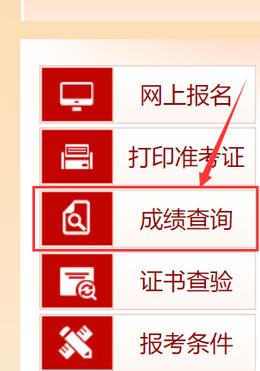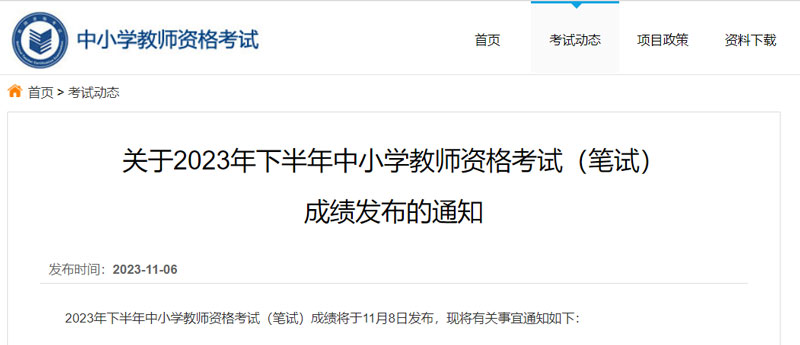[摘要] 基于ABAQUS的带加劲肋的顶底角钢连接节点性能研究Behavior Research
基于ABAQUS的带加劲肋的顶底角钢连接节点性能研究Behavior Research Of Stiffened Flange Angle Connection Base On Abaqus
摘要
1994年美国Northbridge地震后,后经过调查研究,发现很多钢结构建筑在节点处发生断裂。1995年日本阪神地震后,在钢结构焊接连接节点处同样出现类似的断裂情况。经研究发现断裂起源于梁柱刚性连接翼缘焊接处,经历两次地震,使研究人员意识到,要避免连接节点处焊接的脆性破坏,有必要改变节点连接形式,要使节点具备一定的转动能力,保证节点延性,同时不降低连接节点的极限承载力。
在钢结构设计中,顶底角钢连接通常被认为是一种铰接节点,而本文对带加劲肋的顶底角钢连接节点进行研究后,表明该节点有较典型的半刚性。
通过有限元分析与实验校核后,顶角钢加劲肋与底角钢加劲的初始刚度对比发现,底角钢加劲肋对节点初始刚度的增加较大,原因在于节点的转动中心下移。
通过分析发现无论是加劲肋顶底角钢还是不带加劲肋的顶底角钢连接,在不同预应力情况下,预应力的大小对节点角钢屈服后的刚度几乎没有影响,但是对节点的初始刚度有较大的影响,螺栓预应力越小,节点的初始刚度也越小,且会出现滑移。当预应力增大到一定程度,预应力的影响将会变小,随着摩擦力增加,节点转动时不再出现滑移。
螺纹孔间隙在螺栓低预应力情况下,对顶底角钢连接节点的影响较大,分析结果表明带有螺栓间隙的节点强度与初始刚度普遍大于没有螺栓间隙的节点。
根据带加劲肋顶底角钢的受力特性,提出了其有效宽度计算公式,最终通过组件法给出了节点的初始刚度计算公式。
通过滞回性能的分析得出,带加劲肋节点的滞回性能优于无加劲肋的节点,但是加劲肋的厚度对节点的滞回性能影响不大。为了提高分析效率提出了简化螺栓壳模型、简化加劲肋模型。
关键词:半刚节点,有限元,顶底角钢,加劲肋
ABSTRACT
After investigation and research of America Northbridge earthquake in 1994 found that a lot of steel structure building fracture at connection. After the Kobe earthquake in Japan in 1995, it also occur the similar problem in the connection of steel structure welding part. The study found that the fracture originated from the beam column connection flange weld, , the researchers realized that, to avoid the welding connection of the brittle failure after experienced two earthquakes, it is necessary to change the connection pattern, to make the connection has a rotation ability, guarantee the connection ductility, but does not reduce the ultimate connection bearing capacity.
In the steel structure design, top and seat angle connections is often consideredasasimple joint, and this paper with stiffened rib of top and seat angle connection for research, the connection has a typical semi-rigid behavior.
After the verification of finite element analysis and experiment, comparison of initial stiffness of top angle stiffened with the seat angle stiffened found that seat angle with stiffeners increases joint stiffness greatly, the reason lies in the center of rotation shift down.
Through analysis of the results, we found that both the top and seat angle with stiffener or without stiffener angle connections in different pre-stress case, pre-stress has almost no effect on connection post yield stiffness, but have great influence on initial connection stiffness, when bolt preload is small, the initial stiffness is small, also can appear slip. When a certain degree of pre-stress of pre-stressed increases, the influence of pre-stress will be small, with the increase of joint surface friction when there is no slip. Screw hole spacing in pre-stressed bolt low case, top bottom effect of angle steel connections is larger, results show that the strength and the initial stiffness with the bolt clearance stiffness is larger than the bolt without gap. Through the analysis of the hysteretic behavior of that joint with stiffener hysteretic performance is better than no node of stiffening rib, but stiffener thickness on the hysteretic behavior of the joints have little effect.
According to the characteristics of stiffened top and seat angle, this thesis puts forward the calculation formula of effective width, finally through the component method calculation formula of joint initial stiffness are given.
Key Words:semi-rigid connection, finite element, top and seat angle, stiffened rib
目录
摘要I
ABSTRACTII
目录III
第1章引言1
1.1研究的背景与意义1
1.1.1常用梁柱半刚性连接形式2
1.1.2半刚性连接的特点3
1.1.3半刚性连接节点分类5
1.1.4带加劲肋的顶底角钢提出7
1.2国内外研究现状8
1.2.1研究状况回顾8
1.2.2半刚性连接节点弯矩转角分析模型8
1.2.3国内主要研究成果9
1.2.4国外主要研究成果10
1.3本文主要工作安排11
第2章带加劲肋的顶底角钢节点与有限元分析理论基础13
2.1连接节点初始刚度计算理论基础13
2.1.1WF CHEN模型13
2.1.2基于组件法模型15
2.2有限元分析理论基础16
2.2.1有限元分析的优点16
2.2.2连接分析的特点16
2.2.3分析类型和求解器选择17
2.2.4实体单元(solid element)17
2.2.5接触定义19
2.3本章小结20
第3章带加劲肋的顶底角钢有限元校核与参数分析21
3.1有限元模型校核21
3.1.1几何尺寸21
3.1.2材料属性22
3.1.3G0S0 G0S1模型数值结果对比22
3.2ABAQUS模型参数分析24
3.2.1几何尺寸24
3.3本章小结27
第4章带加劲肋顶底角钢连接有限元参数化分析28
4.1预应力以及螺孔间隙对节点弯矩-转角曲线的影响28
4.1.1模型尺寸28
4.1.2预应力对模型的影响28
4.2角钢连接传力机制分析31
4.3带加劲肋框架分析37
4.4本章小结40
第5章带加劲肋顶底角钢连接初始刚度计算41
5.1引言41
5.2初始刚度计算41
5.2.1节点变形来源41
5.2.2柱子腹板抗压刚度42
5.2.3柱腹板抗拉刚度43
5.2.4螺栓受拉刚度44
5.2.5螺栓受剪刚度45
5.2.6孔壁承压刚度45
5.2.7受弯柱翼缘刚度45
5.2.8带加劲肋角钢受弯刚度46
5.3初始刚度计算公式47
5.3.1实验结果对比48
5.4半刚性初始刚度判断48
第6章角钢T型连接滞回性能分析50
6.1引言50
6.2模型建立50
6.2.1模型尺寸50
6.2.2模型简化51
6.2.3边界条件与材料属性52
6.3加载制度52
6.4分析结果53
6.4.1有无加劲的影响54
6.4.2加劲肋厚度的影响54
6.4.3简化模型对比55
6.4.4简化加劲肋模型56
6.5本章小结57
第7章结论与展望58
7.1结论58
7.2不足与展望58
致谢59
参考文献60
第1章引言
1.1研究的背景与意义
自20世纪六七十年代,钢框架结构中梁柱之间的连接形式由铆接转变为栓焊连接或者焊接,如图1-1所示。学者普遍认为焊接节点具有较好的强度与抗震性能,然而在1994年发生的美国北岭大地震(里氏6.7级)[ ]与1995年日本阪神大地震(里氏7.2级)[ ]后发现,大范围的焊接连接节点出现了不同程度脆性破坏,在焊缝处产生裂纹向梁端或柱翼缘、柱腹板开展,大大较低了结构的延性,导致连接节点几乎失去了承载能力。研究认为焊接连接节点很难保证现场的施工质量,由于施工难度大,焊接缺陷的产生是不可避免。
第7章结论与展望
7.1结论
在钢结构设计中,顶底角钢连接通常被认为是一种铰接节点,而本文对带加劲肋的顶底角钢连接节点进行研究,表明该节点有较典型的半刚性。
通过有限元分析与实验的校核后发现,底角钢加劲肋比顶角钢加劲肋对节点初始刚度的增加较大,原因在于节点的转动中心下移。
通过分析结果发现无论是加劲肋顶底角钢还是不带加劲肋的顶底角钢连接,在不同预应力情况下,预应力的大小对节点角钢屈服后的刚度几乎没有影响,但是对节点的初始刚度有较大的影响,螺栓预应力越小,节点的初始刚度也越小,且会出现滑移。当预应力增大到一定程度,预应力的影响将会变小,随着摩擦力增加,节点转动时不出现滑移。螺栓孔间隙在螺栓低预应力情况下,对顶底角钢连接节点的影响较大,结果都表明带有螺栓间隙的节点的强度和初始刚度普遍大于没有螺栓间隙节点。
根据带加劲肋顶底角钢的受力特性,提出了其有效宽度计算公式,最终通过组件法给出了节点的初始刚度计算公式并和实验结果有较好的吻合,有一定的参考价值。
通过滞回性能的分析得出,带加劲肋节点的滞回性能优于无加劲肋的节点,但是加劲肋的厚度对节点的滞回性能影响不大。为了提高分析效率提出了简化螺栓壳模型、简化加劲肋模型。
7.2不足与展望
由于本文只是对该节点进行了有限元实验分析,缺乏实际的实验论证,同时关于带加劲肋顶底角钢的实验也相当少,实验数据也很难得到,也无法准确的观测到实际试验中节点的变形情况。
本文给出了初始刚度的计算,但是未能给出强度的计算准则,有待进一步研究,因此无法给出节点的弯矩-转角本构模型。
参考文献
[1]Bertero V V, Anderson J C, Krawinkler H. Performance of steel building structures during the Northridge earthquake[M]. Earthquake Engineering Research Center, University of California, 1994
[2]黄南翼, 张锡云. 日本阪神地震中的钢结构震害[J]. 钢结构, 1995, 10(28): 112-127.
[3]Eurocode 8–Design of Structures for earthquake resistance–Part 1: General rules, seismic actions and rules for buildings[J]. European Standard NF EN, 1998, 1.
[4]LRFD A. Manual of steel construction, load and resistance factor design[J]. Chicago: American Institute of Steel Construction, 1994.
[5] EN B S. 1-8, Eurocode 3: design of steel structures, part 1.8: design of joints[J]. British Standards Institution, 2005.
[6]郭兵. 钢框架梁柱端板连接节点的抗震设计方法[J]. 土木工程学报, 2005, 32(11): 28-32.
[7]Kato B, McGuire W. Analysis of T-Stub Flange-to-Column Connections[J]. American Society of Civil Engineers, 2014.
[8]Chen W F, Goto Y. Stability design of semi-rigid frames[M]. John Wiley & Sons, 1996.
[9]Frye M J, Morris G A. Analysis of flexibly connected steel frames[J]. Canadian Journal of Civil Engineering, 1975, 2(3): 280-291.
[10]Jones S W, Kirby P A, Nethercot D A. Modelling of semi-rigid connection behaviour and its influence on steel column behaviour[J]. Joints in structural steelwork, 1981, 9
[11]Kishi N, Chen W F. Moment-rotation relations of semirigid connections with angles[J]. Journal of Structural Engineering, 1990, 116(7): 1813-1834.
[12]潘建荣. 基于相关性的框架节点半刚性分析方法研究[D]. 汕头大学, 2009.
[13] Kim J H. Hybrid mathematical and informational modeling of beam-to-column connections[D]. University of Illinois at Urbana-Champaign, 2010.
[14]Hibbett, Karlsson, Sorensen. ABAQUS/standard: User's Manual[M]. Hibbitt, Karlsson& Sorensen, 1998.
[15]王燕, 李华军, 厉见芬. 半刚性梁柱节点连接的初始刚度和结构内力分析[J]. 工程力学, 2003, 20(6): 65-69.
[16]王新武, 李和平, &蒋沧如. (2003). 梁柱角钢连接节点的滞回性能试验研究.华中科技大学学报:自然科学版, 31, 8, 13-15.
[17]李文岭, 郝际平, 王连坤, 陈红英, 张俊峰, &石晶等. (2007). 钢梁柱弱轴顶底角钢半刚性连接的抗弯特性. 华南理工大学学报:自然科学版35, 3, 106-110.
[18]刘曙, 尹静, 朱洪波. 钢框架顶底角钢带腹板双角钢连接的试验研究[J]. 华中科技大学学报:自然科学版, 2004, 32(7):108-110.
[19]彭福明, 王燕. 外伸端板半刚性节点在循环荷载作用下的研究[J]. 青岛建筑工程学院学报, 2001, 22(4): 75-79.
[20]顾正维. 钢结构半刚性连接的非线性分析[D]. 浙江大学, 2003.
[21]施刚, 石永久, 王元清, 等. 钢结构半刚性端板连接的设计方法与应用[J]. 工业建筑, 2003, 33(8): 52-55.
[22]陈爱国, 顾强, 苏明周, 等. 腹板双角钢梁柱连接循环荷载试验研究[J]. 建筑结构学报, 2004, 24(6): 67-71.
[23]郑廷银, 徐士云, 张玉. 带加劲肋的顶底角钢与腹板双角钢连接的梁柱节点的试验[J]. 工业建筑, 2008, 38(4): 87-90.
[24]郑廷银, 毛志伟, 张玉. 带加劲肋的顶底角钢连接梁柱节点的静力性能分析[J]. 南京工业大学学报: 自然科学版, 2008, 30(5): 85-89.
[25]刘伟, 舒赣平. 顶底翼缘角钢半刚性连接的初始刚度和极限承载力研究[J]. 建筑钢结构进展, 2014, 1: 002.
[26]Korol R M, Ghobarah A, Osman A. Extended end-plate connections under cyclic loading: Behaviour and design[J]. Journal of Constructional Steel Research, 1990, 16(4): 253-280.
[27]Azizinamini A, Radziminski J B. Static and cyclic performance of semirigid steel beam-to-column connections[J]. Journal of Structural Engineering, 1989, 115(12): 2979-2999.
[28]Azizinamini A. Monotonic response of semi-rigid steel beam to column connections. MS thesis, University of South Carolina, Columbia, 1982
[29]Nader M N, Astaneh-Asl A. Shaking table tests of rigid, semirigid, and flexible steel frames[J]. Journal of Structural Engineering, 1996, 122(6): 589-596.
[30]Elnashai A S, Elghazouli A Y, Denesh-Ashtiani F A. Response of semirigid steel frames to cyclic and earthquake loads[J]. Journal of structural Engineering, 1998, 124(8): 857-867.
[31]Kukreti A R, Abolmaali A S. Moment-rotation hysteresis behavior of top and seat angle steel frame connections[J]. Journal of structural Engineering, 1999, 125(8): 810-820.
[32] 98 J G J. 高层民用建筑钢结构技术规程 [S][D]. , 1998.
[33] 2003 G B. 钢结构设计规范 [S][D]. , 2003.
[34] Simulia. ABAQUS Finite Element Analysis. www.simulia.com, 2011.
[35]Citipitioglu A M, Haj-Ali R M, White D W. Refined 3D finite element modeling of partially-restrained connections including slip[J]. Journal of constructional Steel research, 2002, 58(5): 995-1013.
[36]Skejic D, Dujmovic D, Beg D. Behaviour of stiffened flange cleat joints[J]. Journal of Constructional Steel Research, 2014, 103: 61-76.
[37]Citipitioglu A M. Development and assessment of response and strength models for bolted steel connections using refined nonlinear 3D finite element analysis[J]. 2009.
[38]Faella C, Piluso V, Rizzano G. Structural steel semirigid connections: theory, design, and software[M]. CRC press, 1999.
[39]吴兆旗, 张素梅, 姜绍飞. 梁柱端板连接节点初始转动刚度计算模型 [J][J]. 工程力学, 2009, 6: 040.
[40]Kiamanesh R, Abolmaali A, Razavi M. Effect of Circular Bolt Pattern on Behavior of Extended End-Plate Connection[J]. Journal of Structural Engineering, 2013, (11):1833-1841.
[41] 96 J G J. 建筑抗震试验方法规程 [S][D]. , 1997.










